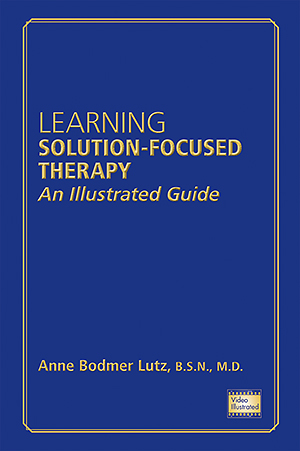Sections
Excerpt
Completing a psychiatric and clinical evaluation is a highly skilled endeavor requiring expertise in many areas, including that of obtaining the necessary information to treat patients most effectively(Dulcan 2010; Hales and Yudofsky 2003). One question that often arises in learning solution-focused therapy is how to balance maintaining a solution-focused conversation with the need to obtain required diagnostic information. All fields of medicine have required standards of care and best practices(Norcross et al. 2008; Stout and Hayes 2005). These not only provide guidance for clinicians in the field, but also are the benchmarks to which professionals are held should the unexpected happen and a patient have a poor outcome. A good clinician takes these standards to heart regardless of the theoretical model employed. Each theoretical approach may have a different focus of assessment and treatment, but regardless of model, there are common domains that measure treatment effectiveness. These areas include quality of life, patient functioning in multiple domains, and whether the patient and his or her VIPs (very important people) view their problem as solved. These criteria determine whether treatment has been successful. In this way, the solution-focused model of treatment shares the identified problem and outcome criteria of other treatment models. The difference is how the solution-focused clinician guides the conversation toward these discharge criteria. Let’s use the analogy of a snowball at the top of a mountain. If you begin with a small snowball at the top of the mountain and proceed to build this snowball by asking solution-focused questions, the end result at the bottom of the mountain, the end of the conversation, will be a huge snowball with many identified solutions. If you begin with the same snowball but instead ask many problem-focused questions, the end result will be a huge snowball expounding the details of many problems.
Access content
To read the fulltext, please use one of the options below to sign in or purchase access.- Personal login
- Institutional Login
- Sign in via OpenAthens
- Register for access
-
Please login/register if you wish to pair your device and check access availability.
Not a subscriber?
PsychiatryOnline subscription options offer access to the DSM-5 library, books, journals, CME, and patient resources. This all-in-one virtual library provides psychiatrists and mental health professionals with key resources for diagnosis, treatment, research, and professional development.
Need more help? PsychiatryOnline Customer Service may be reached by emailing [email protected] or by calling 800-368-5777 (in the U.S.) or 703-907-7322 (outside the U.S.).



